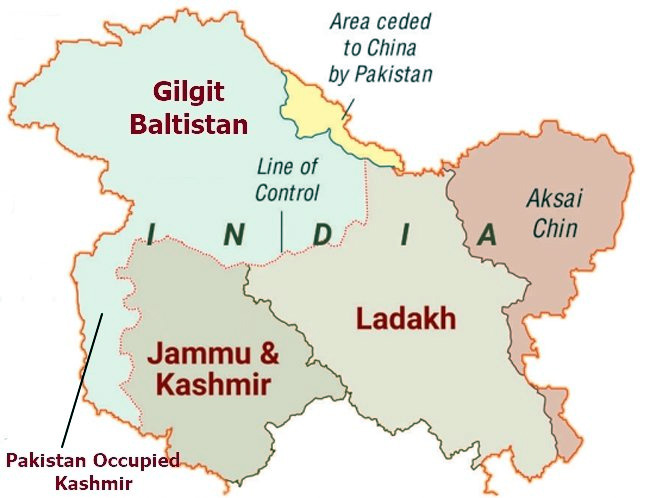Jammu & Kashmir
Exchange of Fire on Line of Control (LoC)
- 18 Feb 2025
- 3 min read
Why in News?
Recently, an exchange of fire erupted on the Line of Control (LoC) in the Pir Panjal Valley’s Poonch. Authorities reported no casualties in the incident.
Key Points
- Ceasefire Violations and Militant Infiltrations:
- Despite the ceasefire renewal in 2020, the Jammu region has witnessed frequent firing incidents, including close to the LoC. Several incidents involved infiltrating militants.
- In February 2025, an IED explosion killed two Army personnel. In a separate cross-border firing incident, two soldiers sustained injuries in a ceasefire violation.
- Indian troops retaliated effectively, inflicting "heavy casualties" on the Pakistani side.
- Status of Ceasefire Agreement:
- Ceasefire violations along the J&K borders have significantly reduced since India and Pakistan reaffirmed the ceasefire agreement on 25th February 2021.
Line of Control
- The Line of Control (LoC) emerged from the 1948 ceasefire line negotiated by the United Nations (UN) after the Kashmir War.
- It was designated as the LoC in 1972, following the Shimla Agreement between the two countries.
- LoC is demarcated up to the Siachen Glacier (Point NJ9842)- the world's highest battlefield.
- LoC is delineated on a map signed by the Director General of Military Operations (DGMO) of both armies and has the international sanctity of a legal agreement.
Pir Panjal
- About:
- The Pir Panjal Range is a mountain range in the northern Indian subcontinent.
- It begins in Ramban and extends westward, lying south of Jammu and Kashmir’s Vale of Kashmir, reaching Muzaffarabad District.
- The range rises sharply to an average elevation of over 13,000 feet (4,000 meters).
- It separates the Jammu Hills in the south from the Vale of Kashmir, beyond which lie the Great Himalayas.
- The range separates from the Himalayas near the banks of the Sutlej River.
- It forms a natural divide between the Beas and Ravi rivers on one side and the Chenab River on the other.
- Major Passes:
- The range has six historical passes, Hajipir Pass, Gulabgarh Pass, Ratanpir Pass, Pir Panjal Pass, Banihal Pass, Bairam Gala Pass.
- Important Peaks:
- Deo Tibba (6,001 m) and Indrasan (6,221 m) are two significant peaks at the eastern end of the range







